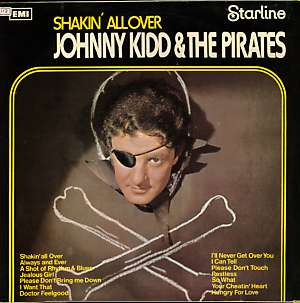 |
||||||||
|
||||||||
|
||||||||
|
"Shakin' All Over"
The first compilation in the UK dedicated to the group came out on an EMI budget label. A note on the back states: "This LP consists of mono recordings electronically reprocessed to give a stereo effect on stereo equipment." At this time (1971) most singles were issued in stereo and back catalogues were often electronically treated in a variety of ways in an attempt to bring them up to date. As true stereo versions of six of the tracks on this LP exist today (okay, so "Please Don't Bring Me Down" and "I Want That" were re-mixed in stereo for the first time in 1992) it might seem reasonable that EMI would have included them at the time, but not necessarily so.
Up until the mid 1960's (with the possible exception of classical music) there was less importance placed on stereo mixes, as borne out by the fact the "Beatles For Sale" LP saw many cuts mastered in stereo in very quick time. True stereo mixes were often the backing track on one speaker and the vocals on the other, with a bit of EQ and compression thrown in for good measure. Even so, with bands well versed in playing their stage numbers and for mixing these to mono two tracks were often enough.
Even when four-track recorders hit Abbey Road backing and vocals would still occupy two tracks in the main, the remaining pair given to overdubs or a lead guitar to allow better balancing in the final mix. While this allowed a little more freedom for stereo these mixes often showed a lack of power and presence compared to their mono counterparts. Treating original mono mixes from more primitive times to this simulated stereo effect at least gave the illusion of a consistent sound throughout and was often preferred for a market where productions were now able to be more powerfully produced than previously, thanks to the recent crop of 8 and 16 track tape recorders available.
Unfortunately to modern ears the result is slightly uncomfortable and irritating: certain frequencies have a "ringing" quality akin to the band being recorded in a bathroom and confuses the ears, the sound emanating from nowhere and everywhere at the same time, a "characteristic" afflicting quite a few 1960's re-releases that would appear over the next two decades. Nonetheless this WAS the Kidd's debut album in the UK and contained some of the more essential cuts, if not all the hits. Colin Miles easily eclipsed this effort however some seven years later (while working for EMI) in the "NUT" series that saw many big 1960's groups receive decent compilation LP's.